In an era where data drives decisions and artificial intelligence (AI) powers innovation, technology leaders must stay ahead of the curve. Embracing Data & AI can revolutionize businesses, enhancing efficiency, insight, and competitiveness. Among the cutting-edge areas of AI, Retrieval-Augmented Generation (RAG) stands out for its potential to transform how we interact with and utilize information.
Understanding RAG: A Brief Overview
![]()
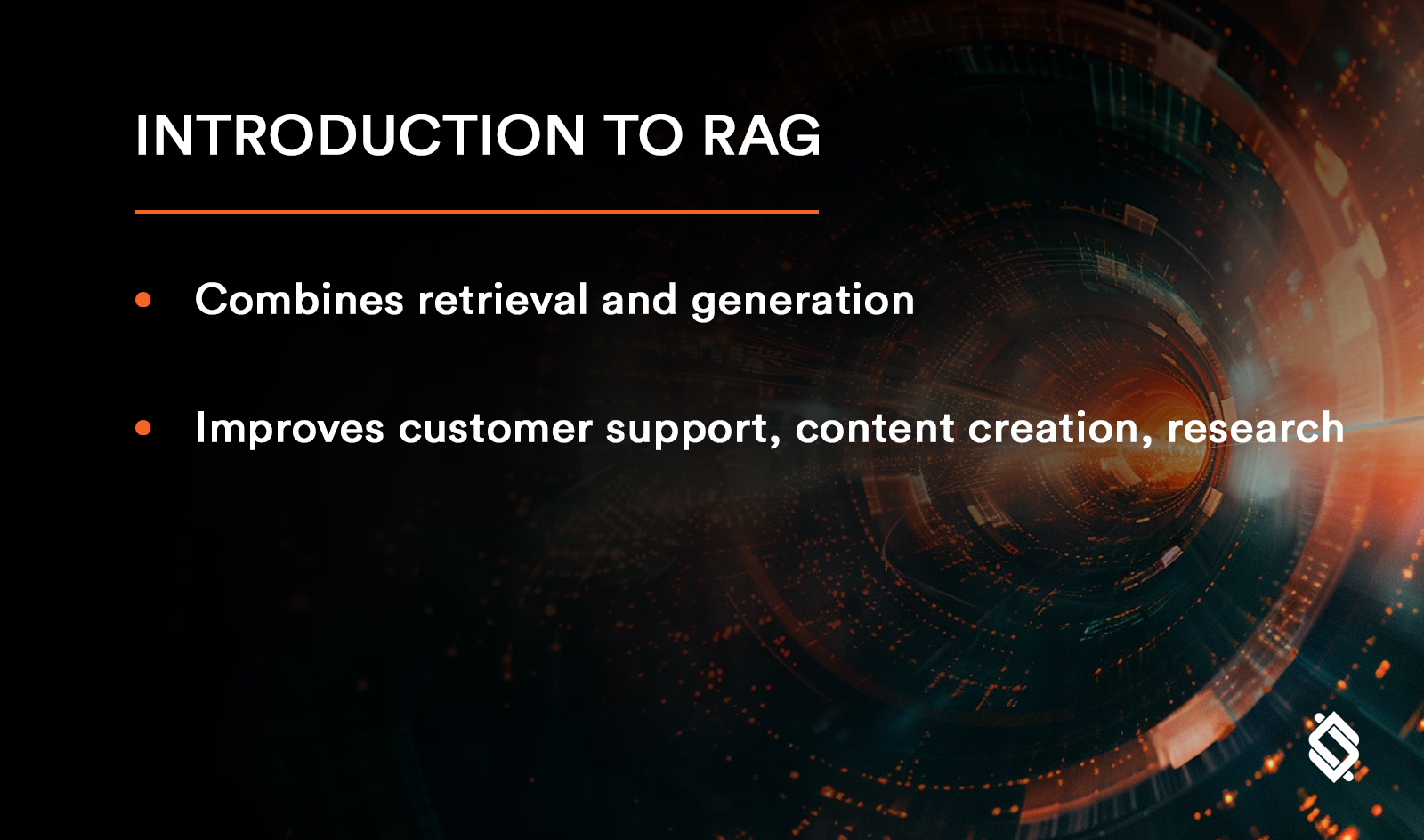
![]()
![]()
![]()
Retrieval-Augmented Generation (RAG) systems combine the strengths of information retrieval and natural language generation. They fetch relevant information from a vast repository and use this data to generate coherent, contextually appropriate responses or documents. This dual capability makes RAG systems invaluable for applications such as customer support, content creation, and research synthesis.
Current Challenges in RAG Research
![]()
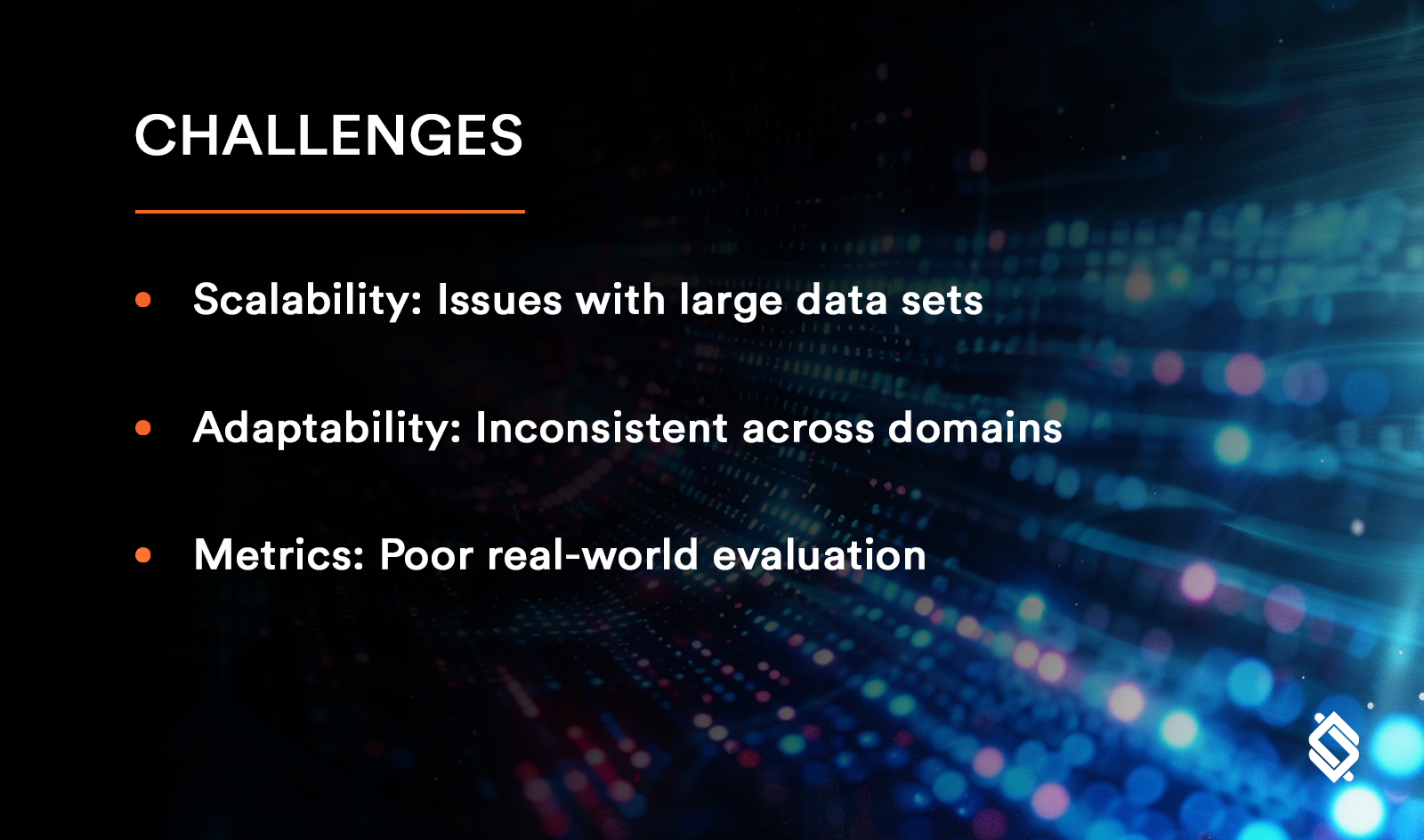
![]()
![]()
![]()
![]()
![]()
![]()
![]()
Despite their promise, RAG systems face significant challenges that must be addressed to realize their full potential. These challenges include scalability, adaptability to diverse domains, and the need for better evaluation metrics.
1. Scalability
Issue: As data grows exponentially, ensuring that RAG systems can efficiently process and retrieve relevant information becomes increasingly difficult. Scalability concerns arise from both the retrieval and generation components.
Impact: Limited scalability can lead to slower response times and reduced accuracy, hindering the system's effectiveness in real-time applications.
Example: In a large-scale customer support system, if a RAG system cannot quickly retrieve relevant support documents from a vast database, customer satisfaction will plummet due to long wait times and potentially inaccurate responses.
2. Adaptability to Diverse Domains
Issue: RAG systems often struggle to perform consistently across different domains. The knowledge and language nuances required for one domain (e.g., medical information) can vastly differ from another (e.g., legal advice).
Impact: This lack of adaptability can limit the usefulness of RAG systems to specific niches, reducing their overall versatility and appeal.
Example: A RAG system trained on general news articles might fail to provide accurate legal advice because it lacks specialized knowledge and the ability to understand legal jargon.
3. Evaluation Metrics
Issue: Current evaluation metrics for RAG systems are often inadequate, failing to capture the nuanced performance of these complex models. Traditional metrics like BLEU or ROUGE, which focus on surface-level text similarity, do not always correlate with the actual quality and usefulness of the generated content.
Impact: Poor evaluation metrics can lead to misguided development efforts, where improvements in metric scores do not translate to better real-world performance.
Example: A RAG system may achieve high scores on traditional metrics by generating text that superficially resembles the reference text but is factually incorrect or contextually irrelevant.
Challenges in Scaling Machine Learning
Future Directions in RAG Research
![]()
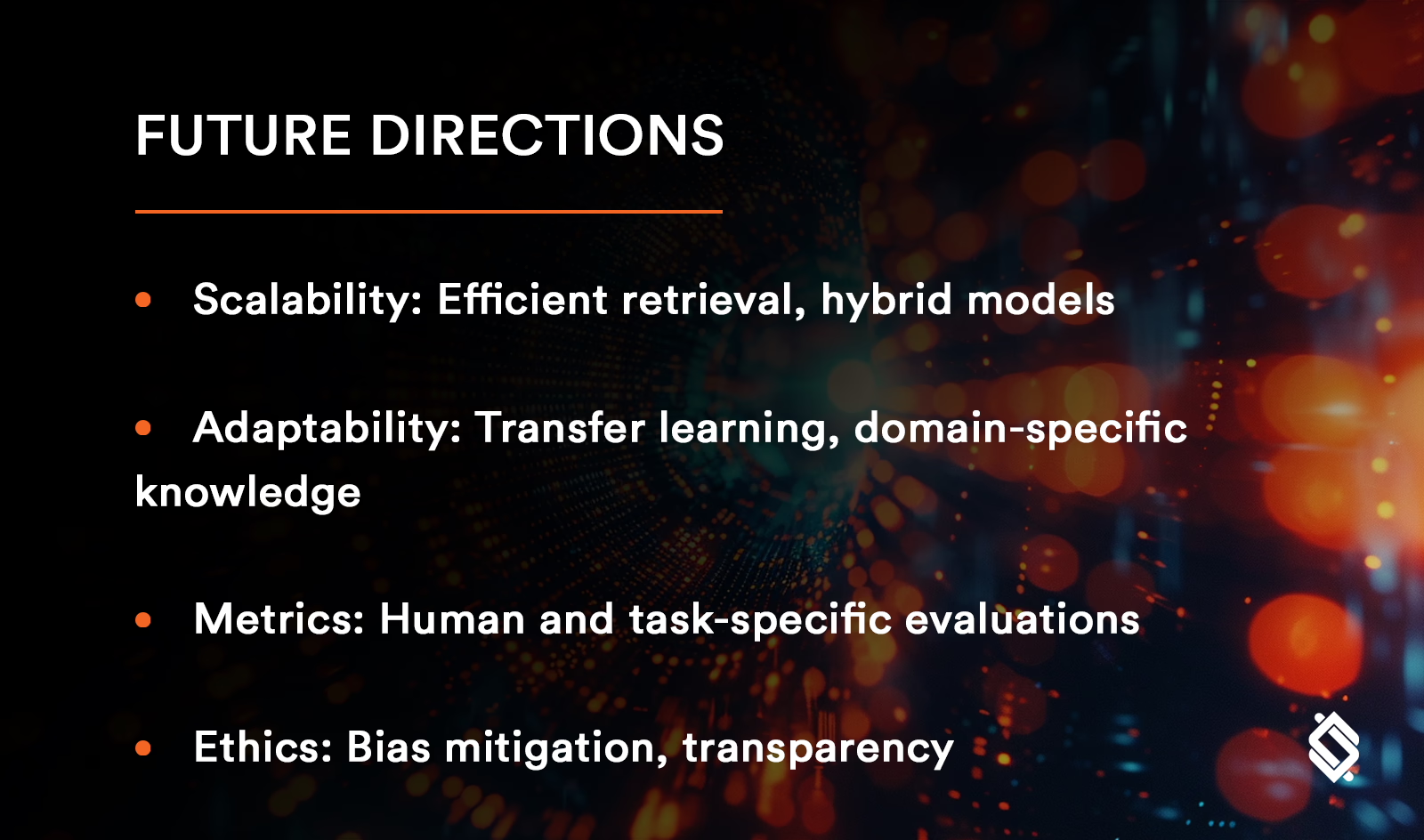
![]()
![]()
![]()
Addressing the challenges facing RAG systems requires a multifaceted approach, combining advancements in algorithm design, infrastructure, and evaluation methodologies. Here are several promising research directions that can drive the next wave of innovation in RAG systems.
1. Enhancing Scalability
Approach: Developing more efficient retrieval mechanisms and scalable architectures is crucial. This includes leveraging advances in distributed computing, parallel processing, and optimized indexing techniques.
Techniques:
- Distributed Retrieval Systems: Utilizing distributed systems can help manage large-scale data, ensuring that retrieval processes are efficient and scalable. Systems like Elasticsearch and Apache Solr, optimized for distributed environments, can be integrated with RAG frameworks.
- Sparse vs. Dense Representations: Exploring hybrid approaches that combine sparse and dense vector representations can improve retrieval accuracy without compromising scalability. Sparse representations (like TF-IDF) are efficient, while dense representations (like embeddings from BERT) capture semantic meaning better.
Example: Implementing a hybrid retrieval system that uses sparse representations for initial filtering and dense representations for fine-grained ranking can enhance the scalability and accuracy of RAG systems in large-scale applications.
Combining Sparse and Dense Representations
2. Improving Adaptability to Diverse Domains
Approach: Developing domain-adaptation techniques and transfer learning methods can enable RAG systems to perform well across various domains. This involves fine-tuning pre-trained models on domain-specific data and incorporating domain knowledge into the retrieval and generation processes.
Techniques:
- Transfer Learning: Using models pre-trained on large, diverse datasets and fine-tuning them on domain-specific data can help RAG systems adapt to new domains more effectively.
A Comprehensive Introduction to Transfer Learning - Domain-Specific Knowledge Bases: Integrating structured domain-specific knowledge bases (e.g., medical ontologies, legal databases) into RAG systems can enhance their understanding and generation capabilities in specialized fields.
Domain Adaptation in Natural Language Processing
Example: A RAG system fine-tuned on medical literature and integrated with a medical ontology could provide accurate, contextually relevant responses to health-related queries, outperforming general-purpose systems.
3. Developing Better Evaluation Metrics
Approach: Creating evaluation metrics that better reflect the real-world performance of RAG systems is essential. These metrics should consider factors like factual accuracy, contextual relevance, and user satisfaction.
Techniques:
- Human-in-the-Loop Evaluation: Involving human evaluators to assess the quality of RAG-generated content can provide more nuanced insights than automated metrics alone. Crowdsourcing platforms like Amazon Mechanical Turk can facilitate this process.
Human-in-the-Loop Machine Learning - Task-Specific Metrics: Developing metrics tailored to specific applications of RAG systems (e.g., customer support, research synthesis) can provide more relevant assessments of performance. For instance, metrics for customer support might prioritize response accuracy and user satisfaction over surface-level text similarity.
Example: Implementing a multi-dimensional evaluation framework that combines automated metrics with human judgments and task-specific criteria can provide a comprehensive assessment of RAG system performance.
Evaluating Natural Language Generation Systems
4. Integrating Ethical and Fairness Considerations
Approach: Ensuring that RAG systems are ethical and fair is critical for their widespread adoption. This involves addressing biases in the training data, ensuring transparency in decision-making processes, and implementing safeguards against misuse.
Techniques:
- Bias Mitigation: Developing methods to detect and mitigate biases in training data and model outputs can help create fairer RAG systems. Techniques like adversarial training and debiasing algorithms can be employed.
- Explainability: Enhancing the explainability of RAG systems can improve user trust and facilitate ethical use. Techniques like model interpretability tools and explainable AI frameworks can help achieve this.
Example: A RAG system designed for hiring processes should be transparent about how it generates recommendations and should actively mitigate biases related to gender, race, or socioeconomic status.
Techniques for Mitigating AI Bias
Real-World Applications and Case Studies
![]()
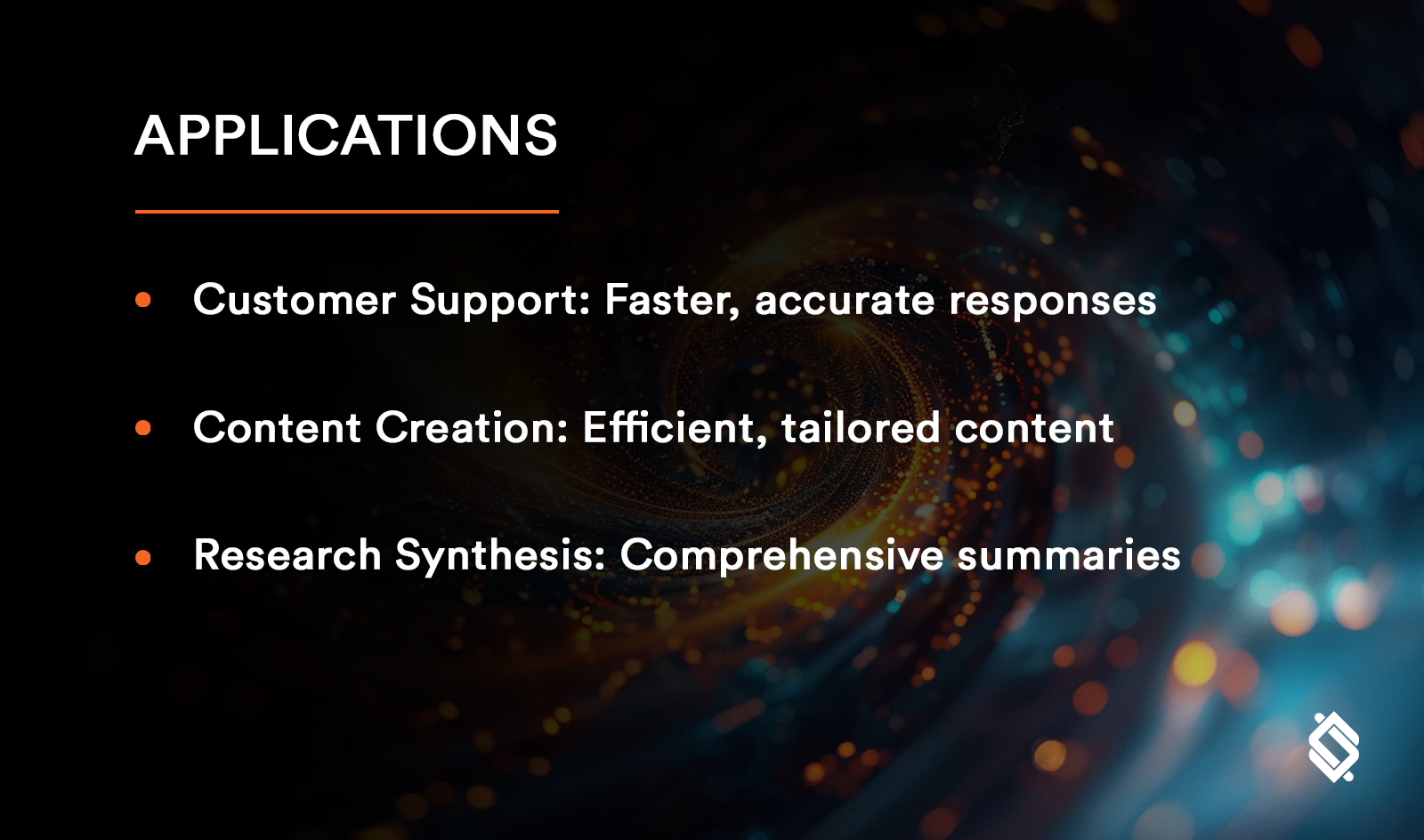
![]()
![]()
Understanding the theoretical advancements in RAG research is crucial, but seeing these concepts in action provides a tangible sense of their potential. Here are a few real-world applications and case studies illustrating the impact of RAG systems.
1. Customer Support
Case Study: A multinational telecommunications company implemented a RAG-based chatbot for customer support. The system retrieves relevant information from a vast database of support documents and generates coherent responses to customer queries.
Outcome: The RAG chatbot reduced average response times by 50% and increased customer satisfaction scores by 30%, demonstrating the system's scalability and adaptability.
AI Chatbots in Customer Service
2. Content Creation
Case Study: A digital marketing agency uses a RAG system to generate content for various clients across different industries. The system retrieves relevant information about each client's products and services and generates customized marketing content.
Outcome: The RAG system streamlined the content creation process, reducing the time required to produce high-quality content by 40%. The system's ability to adapt to different domains ensured that the generated content was relevant and effective.
3. Research Synthesis
Case Study: A pharmaceutical company employs a RAG system to synthesize research findings from a vast corpus of scientific literature. The system retrieves relevant studies and generates comprehensive summaries for researchers.
Outcome: The RAG system accelerated the research synthesis process, enabling researchers to stay up-to-date with the latest findings and make informed decisions more quickly.
Conclusion: The Path Forward for Technology Leaders
![]()
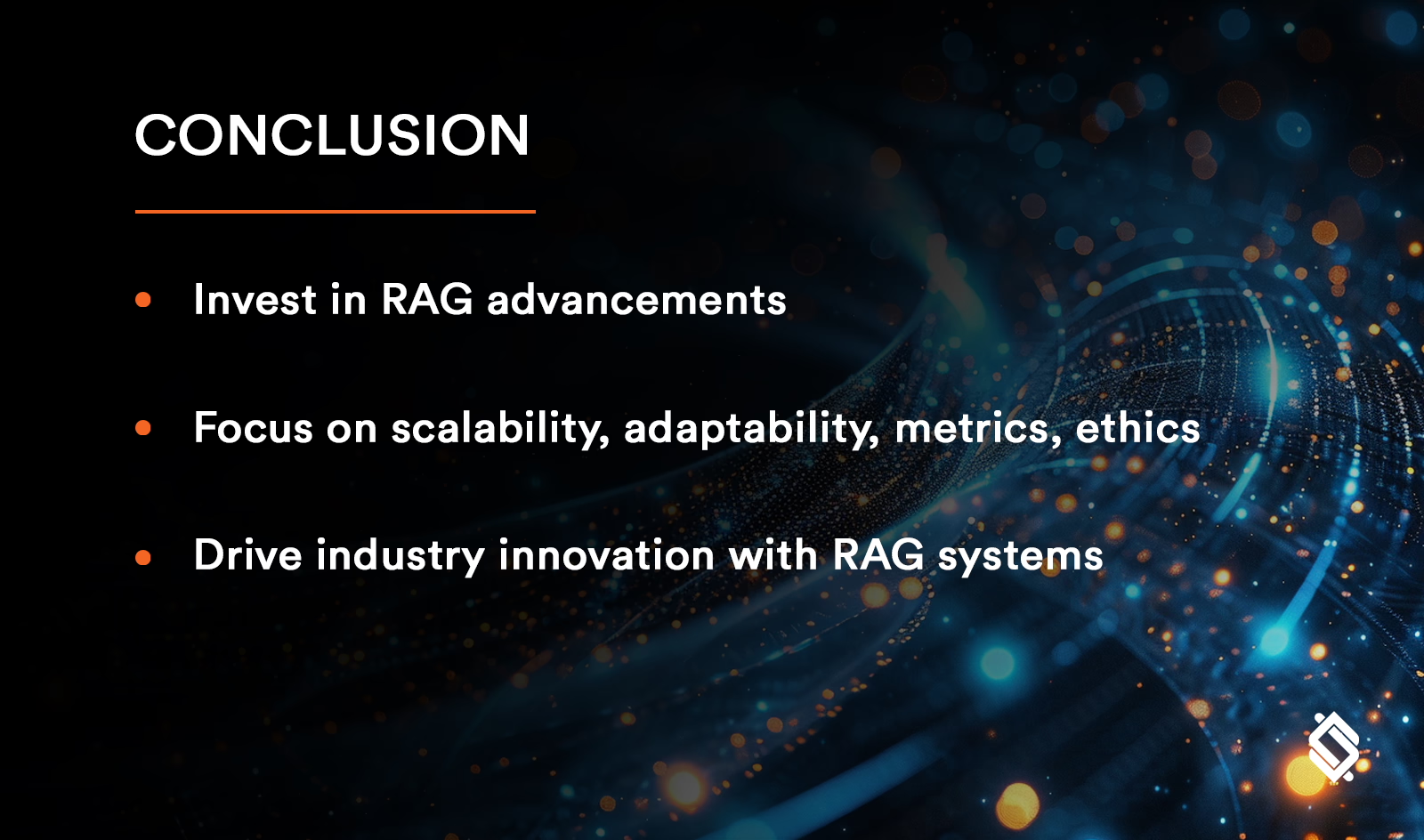
![]()
![]()
As technology leaders, the ability to harness the power of Data & AI through advancements in RAG systems can drive significant innovation and competitive advantage. While current challenges such as scalability, adaptability to diverse domains, and evaluation metrics pose hurdles, ongoing research and development are paving the way for more robust and versatile solutions.
By investing in the latest research directions—enhancing scalability, improving domain adaptability, developing better evaluation metrics, and integrating ethical considerations—technology companies can unlock the full potential of RAG systems. The real-world applications and case studies highlighted demonstrate the transformative impact these systems can have across various industries.
Embracing these advancements not only positions your company at the forefront of technological innovation but also ensures that you are equipped to navigate the complexities of the modern data-driven landscape. The future of RAG research is bright, and with strategic investment and focus, technology leaders can lead the charge into this exciting new frontier.



